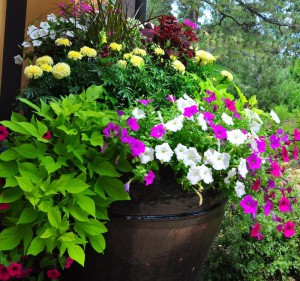 Because of extended rains, most planting beds are full of mud, muk and yuk. Even if you are willing to take a shovel to these super-saturated soils, is it worth the effort?
Because of extended rains, most planting beds are full of mud, muk and yuk. Even if you are willing to take a shovel to these super-saturated soils, is it worth the effort?
The short answer is probably not.
Even if you are willing to slog through water-soaked soil, installing plants or seeds in these conditions is a set-up for disaster. Walking through and trying to turn saturated soil compacts it and compaction will keep roots from spreading out from the plant as they should. Compaction also creates run-off rather than allowing water to soak into the soil.
Digging a hole in wet soil to plant a tree, shrub or perennial will often create air pockets around the plant. These pockets of air will collect water and can lead to root rot.
To have healthy and more productive plants, it’s best to be patient and give the ground time to dry. Here are a few tips about what to do and not do.
 Plant annuals now in well-drained containers to create seasonal color. While night-time temps are still warming, monitor the weather. If there is a frost warning in your area, cover or bring plants inside.
Plant annuals now in well-drained containers to create seasonal color. While night-time temps are still warming, monitor the weather. If there is a frost warning in your area, cover or bring plants inside.
Delay planting other annuals and edibles unless beds have been well amended, for example, with peat moss. If you plant seeds, create a row, place the seeds and cover them with peat moss rather than soil.
Monitor germination
With the late start, 2015 will be a short growing season. Pay close attention to when plants germinate. This may not be the year to plant a giant pumpkin, for example, because of the time required for it to reach maturity.
Read the back of the seed packet and look for seeds that will yield a mature harvest within 100 days. Time to maturity this year may approach frost, so it will be strategic to select seeds that can be harvested sooner than later.
Most seeds germinate in 1-2 weeks, but cold night-time temps are keeping the soil cool which can delay germination. If seeds have not germinated in 3 weeks, re-plant. If too many plants eventually emerge, they can be thinned.
While the soil is drying, there are still productive things to do in the garden.
- Apply compost over bed areas – but don’t till it in while soil is wet.
- Top compost with a layer of mulch to help deter weeds as a bumper crop of weeds is sure to follow the rain.
- Take advantage of the wet soil to pull weeds. It’s easier to pull out roots while the ground is moist.
